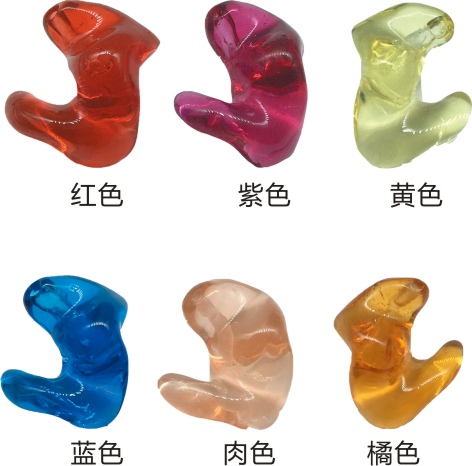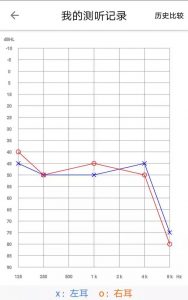The English language of the ear mold is earmold. It is actually composed of two English words. “ear” and “mold” (sometimes written as mould) can be literally translated into the meaning of the ear model. According to the complete definition of “Chinese-English Dictionary of Listening Mechanics” “coupler formed to fit into the auricle that channels sound from the earhook of a hearing aid into the ear canal.”, I translated it into a “size and shape suitable for the auricle, the sound from the hearing aid ear hook into the ear canal “Combo”, this is a technical term. In fact, the ear mold is a custom earplug that connects the hearing aid to the ear. However, the role of the ear mold cannot be underestimated. The quality and design of the ear mold customization directly affects the use of the hearing aid, especially for high-power analog hearing aids.

The history of ear molds can be traced back to the early 20 century, but from the literature point of view, it should start in the 1920s of the 20 century. Westeron Electronics Laboratories applied for the first patent on ear molds around 1920, but the ear molds were not customized at the time. Just like the standard earplugs used today, the custom ear molds should be New York at the time. Invented by a dentist. Since then, the ear mold has begun to develop rapidly. In 1962, the National Association of Earmold Laboritories (NAEL) was established in the United States. Its main responsibility is to standardize the parts, materials and shapes of ear molds. In 1970, the ear molds used today. The basic technical indicators have been standardized and unified.
From the function of the ear mold, it is a sound system that connects the behind-the-ear or box-type hearing aid to the human ear. From the perspective of the ear mold, in the traditional sense, the ear mold includes the model and sound tube of the ear mold. Now, the academic community tends to incorporate the ear hook of the hearing aid into the system, such as the Children’s Hearing Aid issued by the American Hearing Society in 2003. The sound channel consists of the earhook and tube that leads through the earmold and sends the ear channel and the sound tube are collectively referred to as the “sound channel”. ” sound into the ear canal” can be translated into “a system consisting of an ear hook and a sound tube that transmits sound through the ear mold to the ear.” Obviously, the material making and design of each part of the whole sound system of the ear mold will affect the sound amplification effect. Most of the problems in the use of the ear machine are related to this, such as howling, insufficient gain, unclearness, and pain. Uncomfortable, etc., are caused by improper use of the ear mold and its use.
The ear mold generally uses two materials, namely, a hard ear mold and a soft ear mold material. The hard ear mold is made of a special chemical material, and is added with ethylene acid or polyalkenic acid, which is harmless to the human body; and the soft ear mold is made of silicone. Made of two materials are certified to be harmless to the human body. The hard ear mold is simple in manufacturing process, but it is uncomfortable to wear; the soft ear mold is comfortable to wear and easy to be embedded in various parts of the ear canal, and the sealing type is good, and is suitable for a high-power hearing aid. The disadvantage of soft ear molds is that they are not easy to modify. Generally speaking, the material of the ear mold can be used according to the characteristics of the human skin, age and regionality. For example, the southern part is wet and hot, and the soft ear mold is easy to sweat, and the north is relatively better.
The ear mold is very important for the sound transmission. The sound leakage of the ear mold itself involves quality problems such as technical production and ear mold design, such as improper sampling of the ear mold, or the quality of the ear mold may be reduced due to lack of skill and experience of the technician during processing. The use of hearing aids. Therefore, understanding the acoustic characteristics of ear molds and reasonable scientific design is the key to improving the quality of ear molds. In addition, it should be noted that the part of the ear mold inserted into the ear canal, called the ear mode channel port, its length and thickness and other technical processing involves complex physical acoustics and mathematical principles, such as the size of the ear mold, the ear mode channel. The length of the sound hole opening diameter of the ear mode channel directly affects the acoustic performance of the sound transmission process. Generally speaking, the medium-length ear mode channel has an inner diameter of 3 mm and a length of 18 mm. In the sound transmission, the sound quality can be kept flat until the peak pulse is generated at 3400 Hz. If the channel is longer than 23.4 mm, the high frequency is May be affected. Sometimes this length can lead to an increase or decrease of a few decibels.
At present, most of the hearing-impaired patients in China use high-gain and high-power hearing aids. Generally, ordinary ear molds should be used. However, in practice, we often find that many patients use skeleton or other style ear molds, resulting in the volume switch of the hearing aid. It can only be maintained at the 1/4 switch, which greatly reduces the actual power of the hearing aid and affects the user’s normal hearing training.
Clinically, the influence of the sound tube on the sound transmission process is mainly the size of its inner diameter, the thickness and length of the tube wall. A sound tube with a smaller diameter may be that the power of the sound is saturated, and the gain is lowered. The smaller the inner diameter of the sound tube, the closer the frequency peak wave is to the low frequency; on the contrary, the closer it is to the high frequency. The length of the sound tube itself also affects the sound transmission. The shorter the sound tube, the higher the frequency amplification peak wave. If the length of the sound tube is reduced from 55 mm to 30 mm, the peak wave can be raised from 850 Hz to 1100 Hz. The parameters of the sound tube have been standardized as early as 1979 years. They are divided into different sound tubes from 9 to 16. Generally speaking, the smaller the number, the larger the inner and outer diameters. For example, the inner diameter of the 9 sound tube is 3 mm. The 16 sound tube is only 1.35 mm. The commonly used sound tube is the 13 standard type and thick type, and its inner diameter is 1.93mm, but the outer diameter is different. The thickened outer diameter is 0.35 mm thicker than the standard type. Acousticly, the 13 has better sound transmission than other models. Its peak is at 1000 Hz. A small inner diameter sound tube is not conducive to high-gain, high-power hearing aids. One is because of the possibility of acoustic feedback, and the other is to reduce the output power.
Another effect that affects the ear mold, the problem of acoustic feedback is that the sound tube is not connected to the multi-section sound tube according to the correct method. From the ear mold to the ear hook, the sound tube is composed of several plastic tubes of different diameters. connect them. This type of connection is not wrong. Lybarqer 1972 has done a lot of research in the 70 era and invented the Liebiger sound tube named after it, which is improved by using two different diameter sound tubes. The frequency response curve of the glasses-type hearing aid can increase 5-7 dB. However, the diameters of the two sound tubes must be made and connected to the specified size, rather than whatever they want. Later, Killiam (1981) developed a variety of double-barrels with different inner diameters, and experimentally confirmed the different effects of these channels on the acoustic characteristics of the ear molds, which can help clinical audiologists adjust the hearing aid according to the needs of patients. For best results.
Jinghao medical hearing aid reminder:Hearing aids need to be professionally “fitted”. It is very important to choose a professional hearing aid fitting center and hearing aid fittings! You can call the Jinghao medical for any hearing problems, or you can come to the center to experience the experience. . Hearing aid free consultation phone: +86-18566295705
You can also scan our WeChat public account for more information about hearing.

Link:What is a hearing aid ear mold?
REF: Hearing aids China, Hearing Aids Supplier , Hearing amplifierThe article comes from the Internet. If there is any infringement, please contact [email protected] to delete it.



